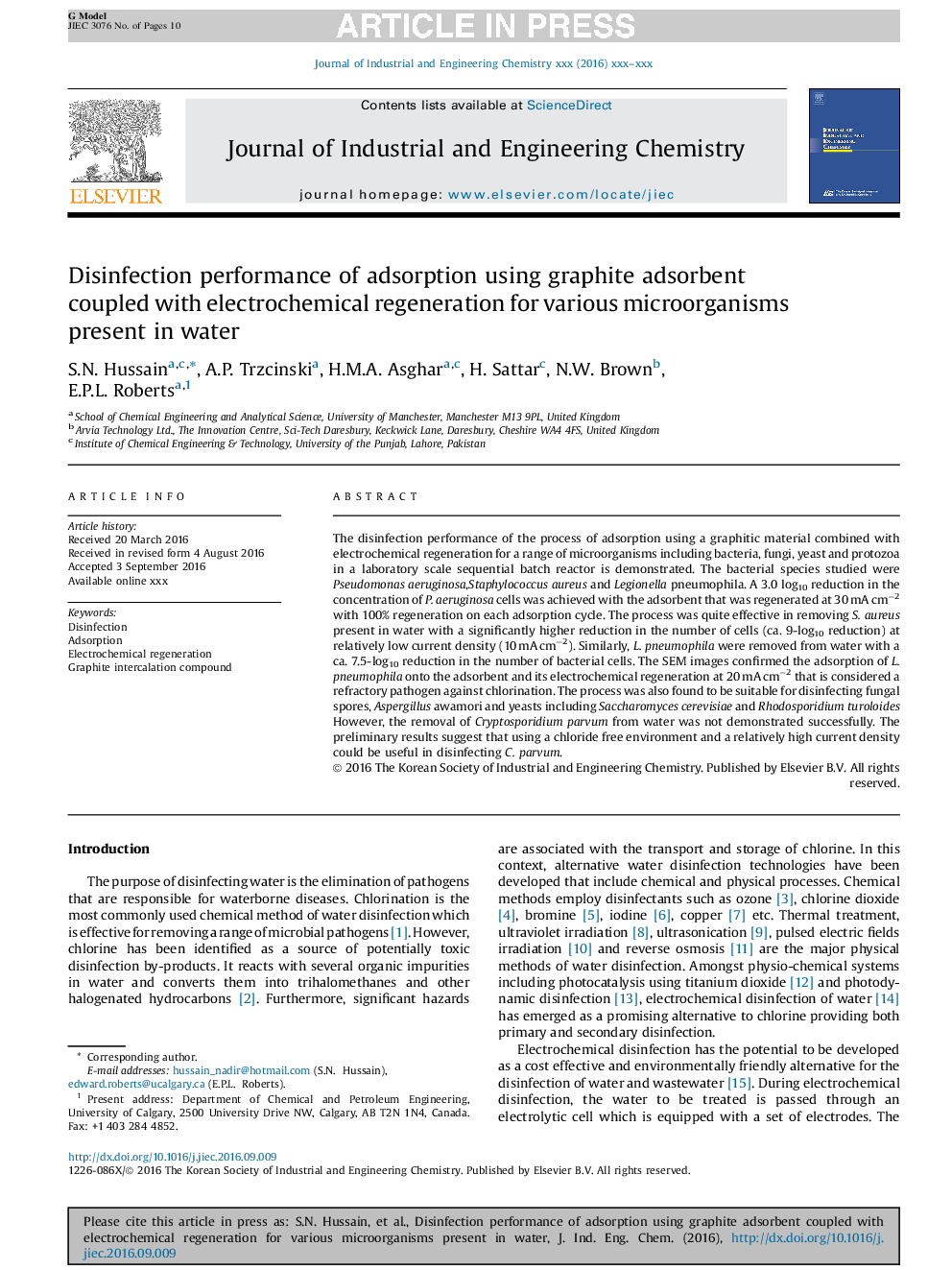| Article ID | Journal | Published Year | Pages | File Type |
|---|---|---|---|---|
| 6669240 | Journal of Industrial and Engineering Chemistry | 2016 | 10 Pages |
Abstract
The disinfection performance of the process of adsorption using a graphitic material combined with electrochemical regeneration for a range of microorganisms including bacteria, fungi, yeast and protozoa in a laboratory scale sequential batch reactor is demonstrated. The bacterial species studied were Pseudomonas aeruginosa, Staphylococcus aureus and Legionella pneumophila. A 3.0 log10 reduction in the concentration of P. aeruginosa cells was achieved with the adsorbent that was regenerated at 30Â mAÂ cmâ2 with 100% regeneration on each adsorption cycle. The process was quite effective in removing S. aureus present in water with a significantly higher reduction in the number of cells (ca. 9-log10 reduction) at relatively low current density (10Â mAÂ cmâ2). Similarly, L. pneumophila were removed from water with a ca. 7.5-log10 reduction in the number of bacterial cells. The SEM images confirmed the adsorption of L. pneumophila onto the adsorbent and its electrochemical regeneration at 20Â mAÂ cmâ2 that is considered a refractory pathogen against chlorination. The process was also found to be suitable for disinfecting fungal spores, Aspergillus awamori and yeasts including Saccharomyces cerevisiae and Rhodosporidium turoloides However, the removal of Cryptosporidium parvum from water was not demonstrated successfully. The preliminary results suggest that using a chloride free environment and a relatively high current density could be useful in disinfecting C. parvum.
Related Topics
Physical Sciences and Engineering
Chemical Engineering
Chemical Engineering (General)
Authors
S.N. Hussain, A.P. Trzcinski, H.M.A. Asghar, H. Sattar, N.W. Brown, E.P.L. Roberts,
